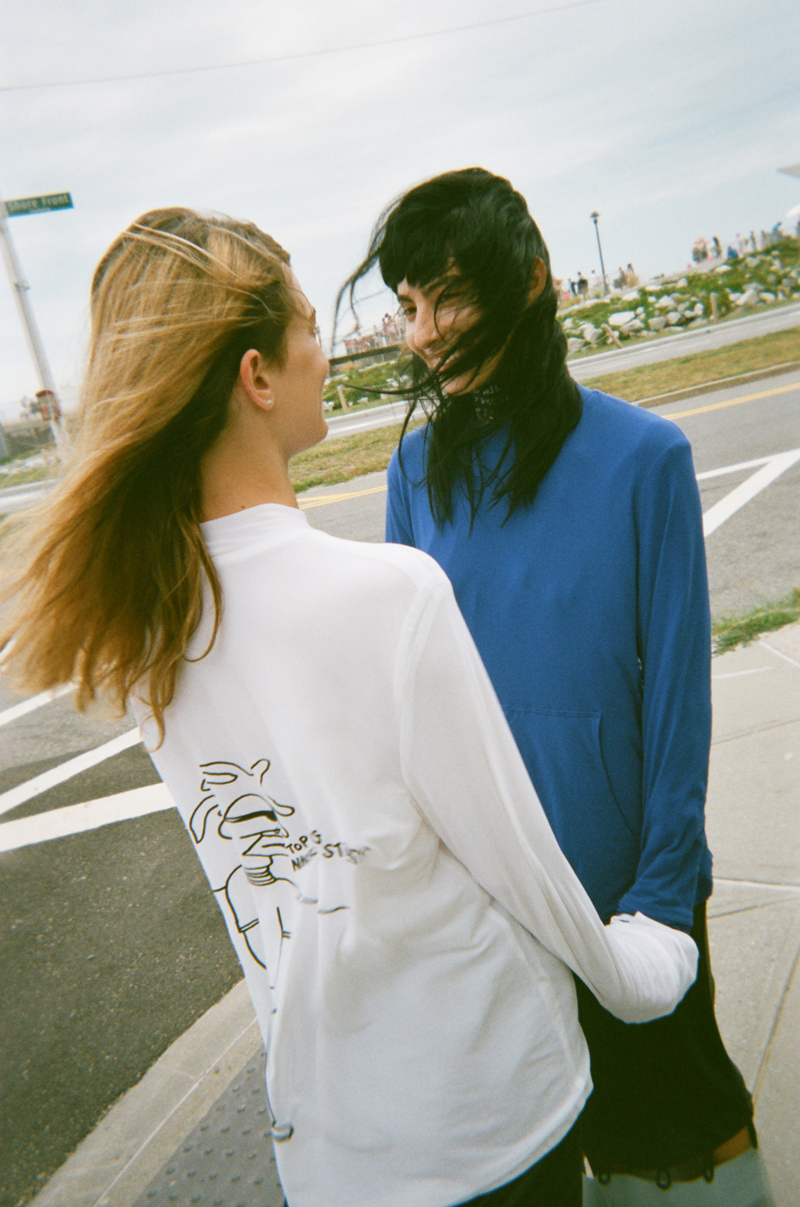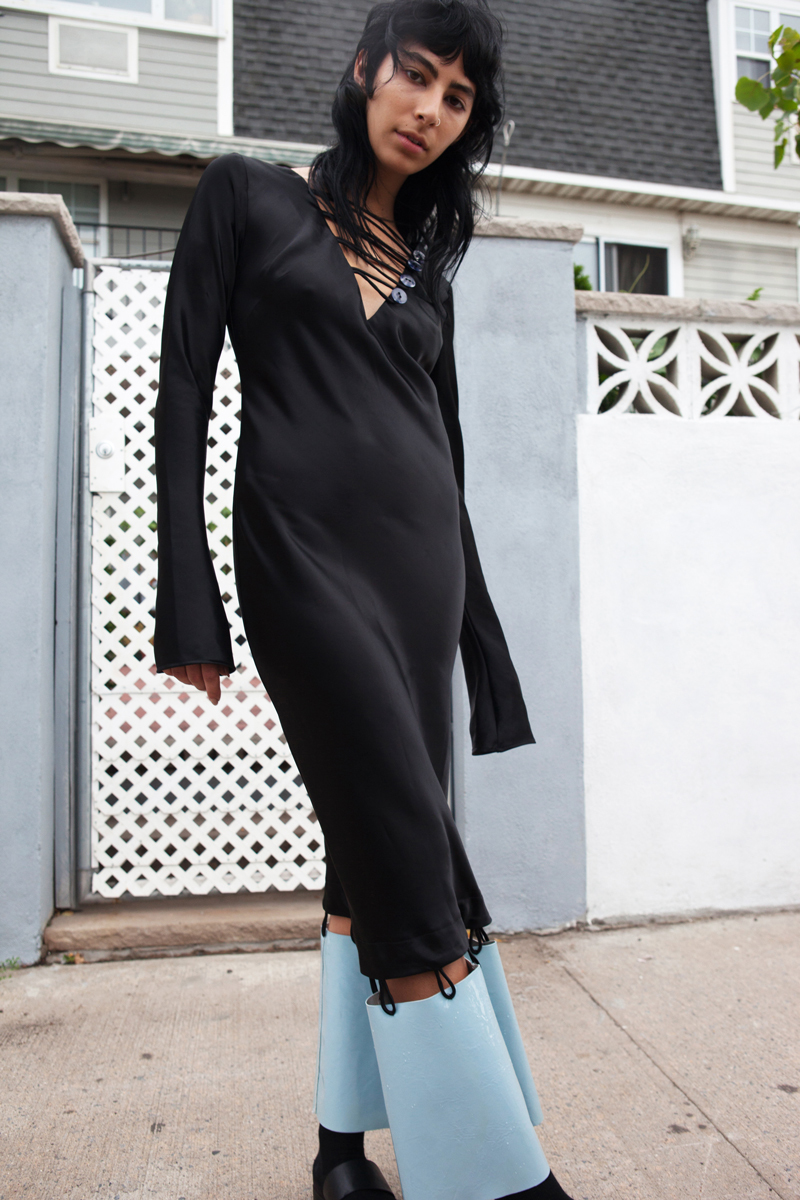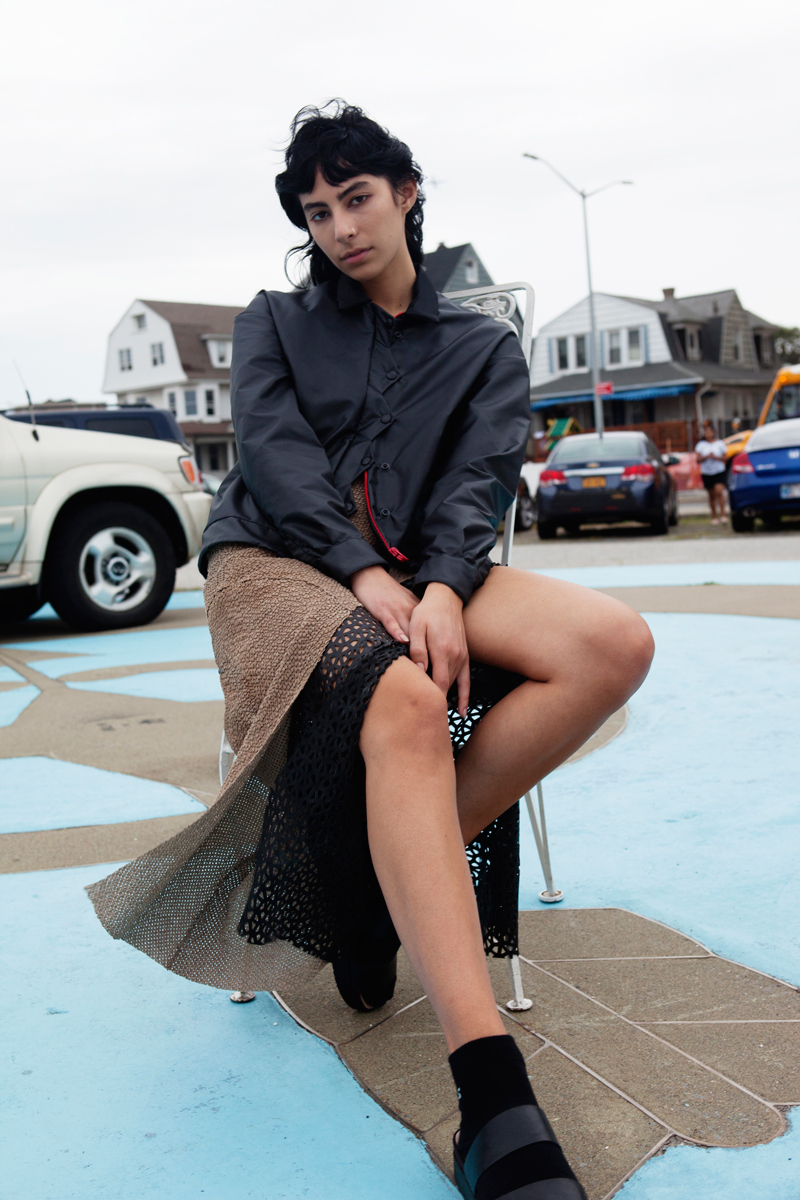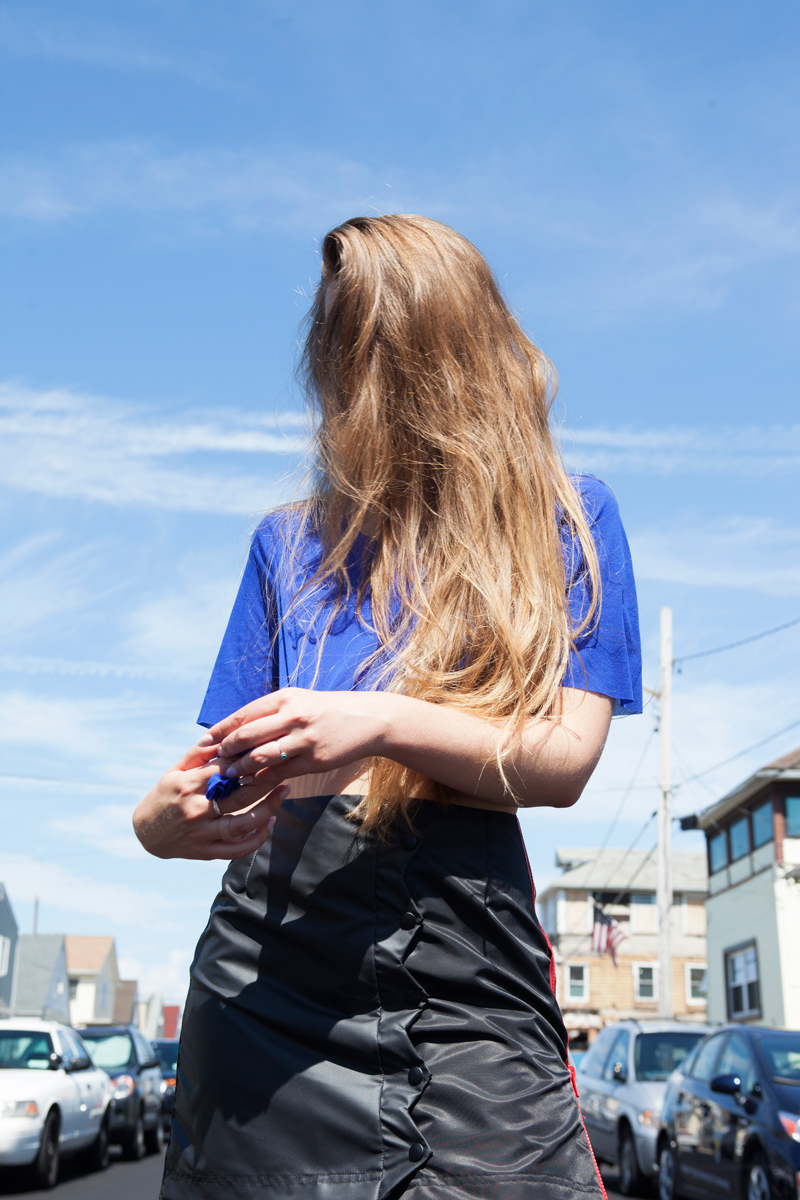Mathys Sinclair is the kind of label that makes you feel excited about fashion and reminds you how much creativity abounds in Australia. Founded by two best friends, Sydney-based Rachelle Sinclair and New York-based Thembi Hanify, it operates simultaneously across time zones and fashion markets. “The majority of our business is done over Facetime,” explains Sinclair. “Our fittings, our trim selection, everything.” She’s not joking, Thembi’s presence in our interview was via Facetime.”We should be sponsored by Apple,” Sinclair laughs.
Launched as part of New York Fashion Week earlier this year, Mathys Sinclair offers a refreshing take on contemporary streetwear with a luxury twist. Everything they design is inherently wearable but belies an intensive attention-to-detail and a genuine sense of originality.
Previously Sinclair worked in design and production at Khalo, while Hanify has lent her art direction skills to Rag & Bone and 3.1 Phillip Lim. Their pasts compliment each other perfectly, but it’s their beliefs that unites them. They reject the industry stereotype that being nice isn’t cool, their ethos is grounded in a simple message: ‘Look cool, be nice’.
Can you tell me a bit about how Mathys Sinclair first came about?
Thembi: The real version of how it came about was probably ten years ago in this seedy nightclub in Brisbane. We’d just met each other and were like, ‘we should start a fashion label together one day’. So the seed of the story was planted a long time ago. Then towards the end of Rachelle wrapping up with Khalo, we thought we’d start our own thing, because we each cover different areas of knowledge.

Is that why you think you make such a good team?
Thembi: Yeah, Rachelle has really amazing design and production knowledge and a great base of contacts in Australia. Then I have the knowledge of art direction and marketing, plus a base of contacts in New York. So we both have really complementary skills, but can come together as well. Rachelle always has an input in branding and I always have an input in the design and production.
Why was it important for you guys to operate across both the Australian and New York markets? Do you find them complementary?
Thembi: It makes sense, because the fashion calendar has become so ridiculous. You have Northern Hemisphere Fall collections dropping while it’s still really warm and then Spring collections dropping when it’s snowing. So we decided to take an outwards-facing sort of approach instead.
Rachelle: And we understand that our customer might be holidaying one week and home the next, so it’s important for us to produce adaptable, layerable clothing that caters to different temperatures as much as possible.
You’ve decided to produce some of the collection as ‘Buy Now, Wear Now,’ why was that important for you?
Thembi: Buy Now, Wear Now is obviously a big trend right now, but often it’s the larger companies who have the financial infrastructure to support that — like Burberry or Tom Ford, which are switching their runway collections into current season, retail-focused events. Being a smaller brand, we still need to be adaptable enough to fit in with the wholesale buyer’s schedule and the fashion week schedule. And [although] Buy Now, Wear Now does require a bit more start up capital; it’s also a great financial opportunity, which has been really helpful for us. But also great for the customer, because they’re able to see the collection and partake immediately.

I feel like that’s a good way to combat the fast fashion system as well, because people can buy into the DNA of a brand sooner and there’s less opportunity for replication.
Rachelle: Yeah, because everything is available online, immediately, now.
Thembi: I think in the long run, we’d like to steer away from presenting things seasonally altogether and, instead, have a constant stream of product and experience for the customer. To make it more organic, rather than being so linked to the traditional cycle of things in fashion.
You’ve also been working with with artist Corey Wash, how did that collaboration came about?
Thembi: As a brand, [we feel] it’s really important to have an ethos that sets you apart from all the other people just producing clothing. So we really wanted to build a story behind Mathys Sinclair. Rachelle and I had always discussed how frustrating it is that, sometimes in the fashion industry, it’s not considered ‘cool’ to be nice. And Corey really calls people out for that.
Corey is the kind of person who just gives zero fucks and is really concerned with having a great attitude on life. So we asked her to do some artwork for us, because it fit in perfectly with everything we’d been talking about at the time.
Why do you think it’s so important for independent designs to celebrate the intersection between art and fashion today?
Thembi: It allows you to open up your brand to different arenas. We’re never going to be just about the clothes, we always want to include more lifestyle, art and design elements. Because fashion in a vacuum is just not really applicable to real life, so it’s important to integrate different aspects of life, to give it context and meaning.
On that topic, your brand feels very influenced by streetwear, would you say that you mostly source inspiration from real life?
Rachelle: Definitely. For Thembi and I, it’s about necessity vs novelty. All of our pieces have to be super wearable, so we’re using beautiful fabrics and trims, but everything has to feel really comfortable as well. It’s all about the finer details of the garment, but if you want to jump on your bike, you totally can.
Thembi: I live in a pretty interesting neighbourhood in Rockaway Beach and often take inspiration from people on the train, or walking around in their Champion sweatsuits. It’s like: this is where the real style comes from [laughs].


Credits
Text Rosie Dalton
Photography Benedict Brink
